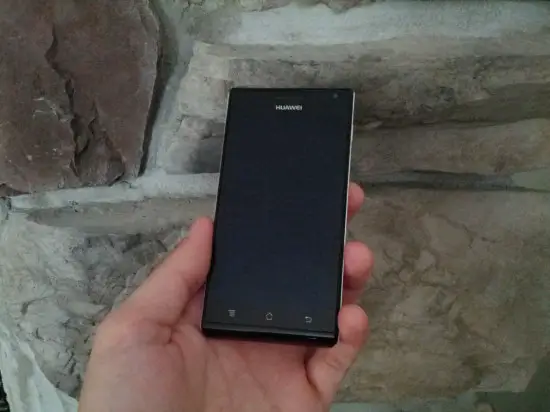
Huawei isn’t exactly known for being a producer of high-end mobile devices, but the company has been hoping to change that image recently. A big reason why we don’t automatically associate the Chinese manufacturer with today’s crop of Galaxy S3s and HTC One X’s is partly due to Huawei’s absence from the North American market — they have made strides here recently — and a history of producing low-cost featurephones and low-powered smartphones. Huawei is ushering in a new era with the release of the Ascend P1, a thin (albeit not as thin as the Ascend P1 S) and powerful device available in China and other regions this month.
While its specs might not read as impressive as they did when it was first announced in January, the Ascend P1 is Huawei’s big chance to catch people’s attention. And it doesn’t come a moment too soon, with quad-core devices looming on the company’s roadmap. So is it time to take Huawei seriously? Read on to find out.
Hardware
The Huawei Ascend P1 is advertised as being the slightly plumper counterpart to the Ascend P1 S, which features a nearly identical spec sheet. But don’t be fooled by the description. The Ascend P1 still measures in at a mere 7.7mm thick, about a millimeter thicker than the P1 S and no worse for it. The number provides a nice bit of marketing for Huawei, but the phone does feature two areas that protrude to a slighter degree of thickness — a “chin” at the bottom of the phone and the area around the camera housing. In the grand scheme of things, the thicker areas are hardly noticed.

To keep device size down Huawei has opted to go with a non-removable battery, which rates at 1670mAh and does a fine job powering the handset’s dual-core 1.5GHz TI OMAP 4460 chipset. The chip is no Snapdragon S4, but coupled with 1GB of RAM it is hard to notice any instances where processing power falls flat.
A 4.3-inch qHD Super AMOLED display provides our window into the Ascend P1, and it looks great doing it. We’ve been a bit spoiled on large 720p HD display as of late, so it would be easy to knock what Huawei is doing here. But going with Super AMOLED was a smart choice, as the richness of color and contrast balances the slightly lower resolution and still provides a solid visual experience.
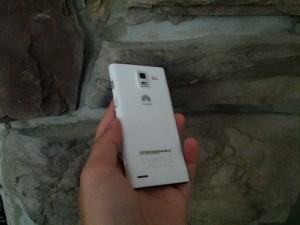
Here I will pause to point out that the last two hardware elements covered — the processor and display — do come off on paper as a bit outdated. The tech being used seems more at home towards the end of 2011 or early 2012, which is when Huawei initially announced this device. We hate to say it, but timing can often make or break how a phone is received. Still, considering the phone as a handset straddling the line between what are currently considered the middle and top tiers of smartphones, the Ascend P1 has plenty to offer.
Moving on, the phone sports an 8MP rear camera with auto-focus and flash. It is capable of capturing full HD resolution and is partnered with a front-facing camera. Huawei skimped a little with 4GB of internal storage (and only a portion of that is available to the user), but a microSD card slot helps to supplement any shortages. Huawei has gone with a row of three capacitive Android buttons as opposed to Ice Cream Sandwich’s software versions, and for some reason they keep Gingerbread’s lineup of Menu/Home/Back rather than Back/Home/Multi-tasking.
Overall, performance was solid and reliable. Battery life varied with heavy use, but the phone is capable of taking you from sunrise to sunset on a single charge. Audio during calls was clear and Dolby Mobile 3.0 Plus sound enhancements ring true though a pretty loud and capable rear speaker.
Software
Huawei has done something fairly unique with their implementation of Android 4.0. Like most manufacturers, a custom skin is present on top of Android, though it isn’t as intrusive or far-reaching as that of other companies. The lock screen offers quick access to apps like the camera or dialer, while the “3D Home” provides an animated carousel of homescreens and customizable launcher. Dropping down the notification pane reveals a set of toggles for various functions like WiFi and GPS, a feature that is quickly becoming standard in custom Android interfaces.


The beauty of Huawei’s user experience, however, is the ability to quickly disable it. It takes two taps to do so by pressing the menu key and then pressing “2D Home.” As if by magic, we are greeted with a completely stock look at Ice Cream Sandwich. A few customization persist, such as the toggles in the notification pane, but otherwise you find the same version of Android you might see on the Google-branded Galaxy Nexus.

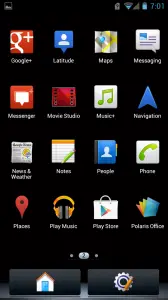
The Ascend P1’s arrangement of Android buttons leaves out multi-tasking, but the capability is still present. A view of all currently open apps can be accessed by long-pressing the Home key. Tiles can be scrolled and swiped as normal.
With fully capable hardware, the Ascend P1 ran both its custom interface and stock Android about as well as any other. Kudos to Huawei for giving users a choice between the two.
Camera
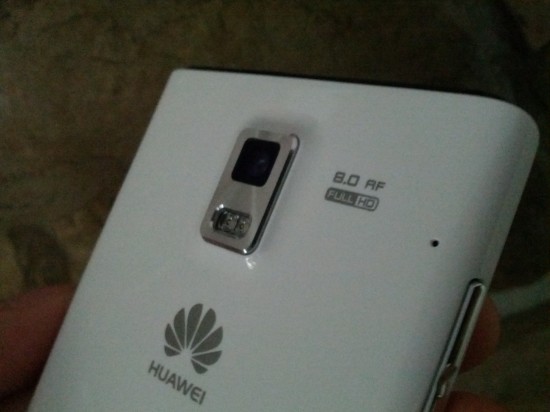
The Ascend P1’s 8MP camera offers plenty of software-based filters and effects, but images aren’t anything particularly special. They look good, for sure, and compare well to other smartphones running a similar camera sensor, but they lack a certain crisp realness we might expect from a top-tier handset.
The images above (click for larger views) offer a pretty good assessment of how the camera look in various lighting conditions. Colors lack a certain vibrancy and definition, and the images do pick up a bit of graininess. The camera works in a pinch for catching shots on the go, but it might not provide the level of quality you would want to completely replace a point-and-shoot or better.
What was nice about the camera was a good selection of Instagram-like photo filters and effects to warp, twist, and bulge the subject of your photos. They might not come in handy in all occasions, but they provide a bit of fun and will get folks playing around with the camera a bit more.
In Conclusion
The real question to ask is not how the Huawei Ascend P1 stacks up with the likes of the Galaxy S3 and One X, but rather has Huawei given us reason to look forward to future releases like the Ascend D Quad as legitimate contenders in the upper echelon of smartphones. With the Ascend P1, Huawei has shown that they can make a high-end handset as well as they can churn out low-cost alternatives, and with better marketing and a wider release future devices could demand some attention. The Ascend P1 itself suffers from launching just a few months too late, but it still makes for a find addition to the Android family. Those wishing to pick up the handset can take advantage of its GSM compatibility on North American networks.








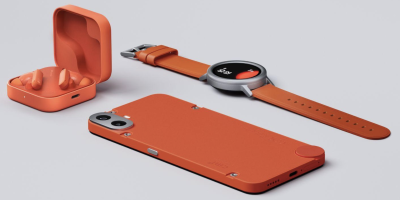






It actually has a nice design.
I agree. Very sexy. If it only it comes to evil (red) V…
I’m assuming that this phone will wind up making it’s way to carriers like Cricket etc. This will be an awesome phone for those kinds of carriers. On the main four, I have a feeling it would get lost.
Great phone which would be really attractive for people buying off contract
where is this phone being sold
can i use it in barbados
????????????